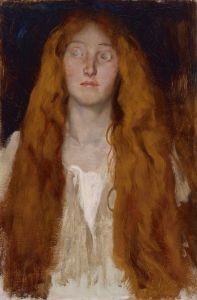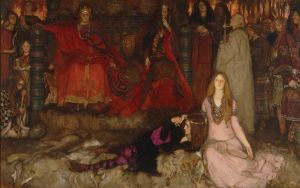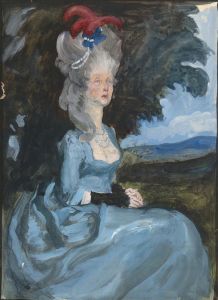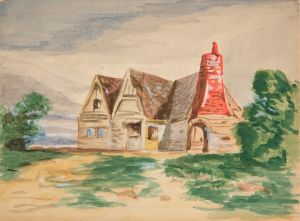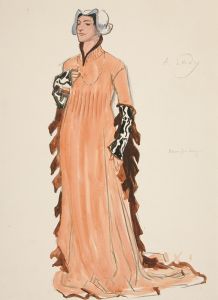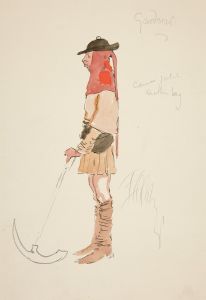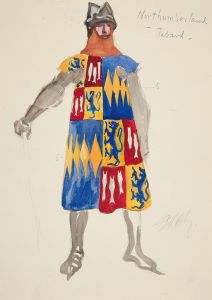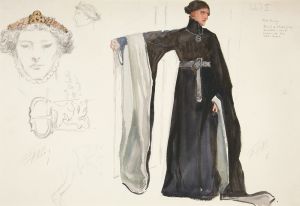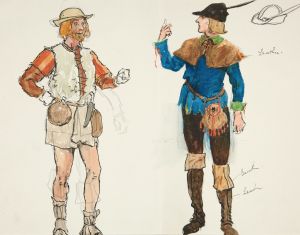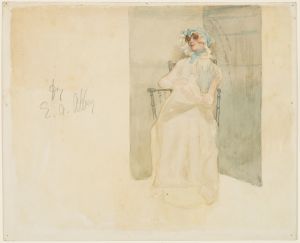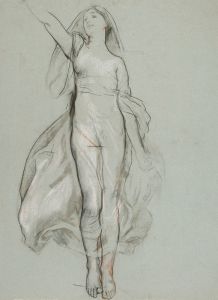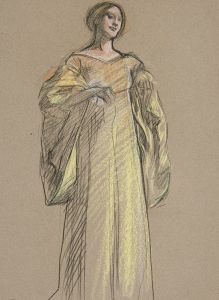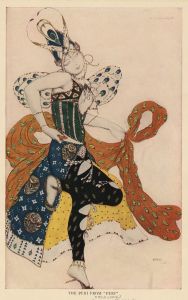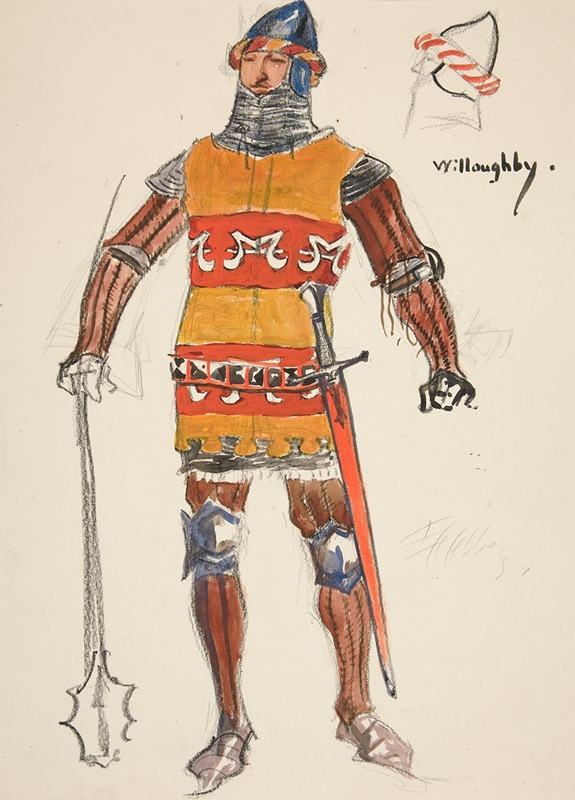
Willoughby, costume sketch for Henry Irving’s Planned Production of King Richard II
A hand-painted replica of Edwin Austin Abbey’s masterpiece Willoughby, costume sketch for Henry Irving’s Planned Production of King Richard II, meticulously crafted by professional artists to capture the true essence of the original. Each piece is created with museum-quality canvas and rare mineral pigments, carefully painted by experienced artists with delicate brushstrokes and rich, layered colors to perfectly recreate the texture of the original artwork. Unlike machine-printed reproductions, this hand-painted version brings the painting to life, infused with the artist’s emotions and skill in every stroke. Whether for personal collection or home decoration, it instantly elevates the artistic atmosphere of any space.
Edwin Austin Abbey was an American artist known for his work in both illustration and painting, particularly in the realm of historical and literary subjects. One of his notable contributions to the world of theater and costume design is his costume sketch for Henry Irving’s planned production of "King Richard II." This sketch, titled "Willoughby," is a testament to Abbey's meticulous attention to historical detail and his ability to bring characters to life through his art.
Henry Irving, a prominent figure in the Victorian theater, was an actor-manager who sought to elevate the standards of theatrical productions in London. His ambition to stage a production of William Shakespeare's "King Richard II" was part of his broader effort to present Shakespearean plays with a high degree of historical accuracy and artistic integrity. For this endeavor, Irving enlisted the help of Edwin Austin Abbey, whose expertise in historical illustration made him an ideal collaborator.
Abbey's sketch for the character of Willoughby is a reflection of his deep understanding of the period's attire and his skill in translating that knowledge into visual form. The costume design showcases Abbey's ability to blend historical research with artistic creativity, ensuring that the garments were not only accurate but also visually compelling for the stage. His work was characterized by a keen eye for detail, which is evident in the intricate patterns and textures depicted in the sketch.
The collaboration between Abbey and Irving was part of a larger movement during the late 19th century to bring a new level of authenticity to theatrical productions. This movement was driven by a desire to move away from the more stylized and often anachronistic costumes of earlier productions, aiming instead for a representation that was true to the time period of the play. Abbey's involvement in this project highlights his role as a key figure in this shift towards historical accuracy in theater.
Although the production of "King Richard II" by Henry Irving ultimately did not come to fruition, Abbey's costume sketches remain as valuable artifacts of this ambitious project. They provide insight into the collaborative process between artists and theater practitioners during this era and underscore the importance of visual design in the overall theatrical experience.
Abbey's work on the "Willoughby" sketch and other designs for the planned production exemplifies his dedication to his craft and his contribution to the world of theater. His legacy as an artist is marked by his ability to capture the essence of historical periods and characters, making his work an enduring part of both art and theater history.





